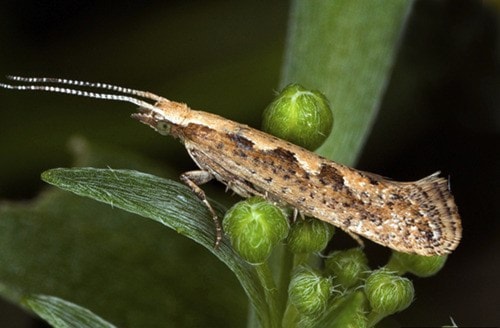An invasive species of moth has been found exhibiting some unusual behavior in greenhouses in Abbotsford.
Diamondback moths, which are not native to North America, are a serious pest of cruciferous vegetables such as cabbage, cauliflower, broccoli and similar green leaf plants. They were recently found infesting bell peppers in two greenhouses in Abbotsford, something that has never been reported before.
Dr. Rana Sarfraz, an entomologist at the University of British Columbia who studied diamondback moths for his PhD, was called to Abbotsford to examine an insect feeding on crops in local greenhouses. The owners of the greenhouses, who Sarfraz declined to name due to privacy issues, did not know what had infested their crops.
Sarfraz said he has never heard of another case in the world where diamondback moths have infested bell peppers. He said this discovery “raises all kinds of questions about what’s happening.”
Sarfraz said the moths are extremely difficult to control on their normal host plants, and pose a serious threat to the crops. He found at the Abbotsford greenhouses, a “number much higher than their threshold,” calling the infestations serious.
Sarfraz explained that B.C. is a hotspot for diamondback moths, due to the mild climate. They originated in Mediterranean areas and are a serious pest in the Prairie provinces. He said there are often outbreaks of the moths in those provinces throughout the year, but due to the cold winters, the moths die off. In the warmer climate of the Fraser Valley, with less freezing to kill them, the concern about infestation is greater.
Sarfraz said with the added heat from greenhouse growing, there is potential for an infestation to be much worse.
“Greenhouses are the perfect conditions ford such pests, who are already very successful on their traditional host outdoors.”
He said the warm conditions of greenhouses allows the insects to reproduce through multiple generations, throughout the year. He said that this could potentially wipe out the whole crop. The caterpillars of the diamondback moths will eat all parts of the plants except for the roots.
Sarfraz worries that if the moths have adapted to be able to eat peppers, they would potentially be able to adapt to eat other greenhouse-grown plants, such as tomatoes and potatoes, or vegetables similar to peppers.
Safraz took specimens from the Abbotsford greenhouses, and allowed them to infest cruciferous plants. They adapted back to a cruciferous vegetable diet easily.
He said the moth is already one of the most difficult pests to control on its original host plant, and it is unknown how it could be controlled if infesting other species, and to what threshold the crops could handle the pest.
He has researched the control of diamondback moths, saying that across the world, infestations of diamondback moths cost about $4 to 5 billion worldwide in damage to crops.
Sarfraz said what he saw in Abbotsford would indicate that this is not a small infestation.
“I would say the infestation was pretty high.”
He is concerned that more greenhouses in the area might be facing this problem. But in the meantime, he will continue researching what effect this discovery could have.
